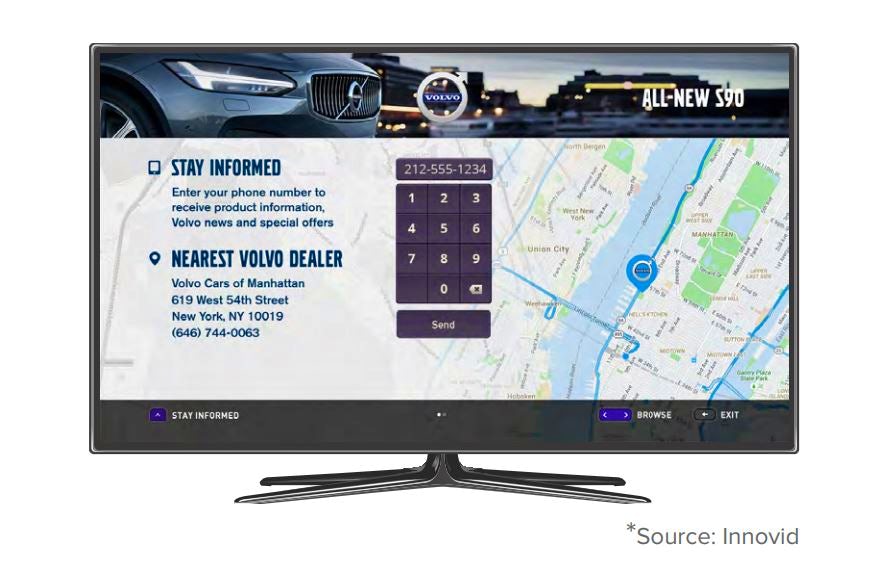| SPONSOR: Good Life Networks (GOOD:TSX-V)
Video advertising is the future! Company’s A.I. makes 80,000
calculations / second, targeting 750 million users to deliver higher
prices and volume. Company announced combined trailing 12 month revenue
at just over $40 Million, $7.9M EBITDA, $3 Million net income. Click here for more information. |

—————————
Three trends shaping programmatic advertising in 2019
In the ten years since the dawn of programmatic, the industry has seen exponential growth, alongside constant change and complexity.
With programmatic now fully implemented into most media strategies, new practices and trends are shaping the industry.
Optimising Programmatic Campaigns – Best Practice Guide
You can read much more in Econsultancy’s Optimising Programmatic Campaigns Best Practice Guide. In the meantime, here’s a run-down of these trends and what they might mean for you.
Personalisation
Programmatic customisation is now common practice, allowing teams to improve performance and provide greater relevancy with personalised messaging. Vast amounts of data also mean that advertising creative can dynamically change to be all the more relevant to users, with ads adapting to factors like location, device, weather, time, and demographics.
One of the main benefits of the technology behind this is that it generates a lot of quick feedback, which allows marketers to optimise creative in real time, and to change what’s in front of consumers’ eyes at a rapid rate.
Case studies have illustrated the effectiveness of personalisation in programmatic campaigns. Mindshare Indonesia, for example, developed an always-on retargeting campaign using dynamic creative optimisation technology for AirAsia, which allowed its programmatic team to dynamically serve thousands of ad versions based on the last destination travellers searched for on its website. Mindshare created over 5,500 ad versions in three months, saving an estimated 276 days of production time, and generating a higher ROI for the airline.
Programmatic TV
Within the industry, there appears to be a growing desire for a solution to bridge the gap between television advertising and online advertising.
Consequently, with traditional TV advertising slowing in pace, and programmatic TV advertising buying increasing, TV ads could increasingly be purchased programmatically. Indeed, PWC predicts that programmatic TV will represent approximately one third of global TV ad revenue by 2021.
There are certainly challenges that come along with programmatic TV. First, there is the need for greater diversity in terms of the inventory available. Second, there are concerns around transparency and brand safety, although this issue is continually improving.
Three ways to boost brand safety in the programmatic age
On the other hand, there are big benefits to programmatic TV, the main one being new format types on connected TVs, such as unskippable 15- and 30-second video ads (which can be both immersive and engaging). Connected TV ad campaigns also allow for precision targeting based on more accurate consumer data.
For automotive brand Volvo, a programmatic TV campaign generated significant sales lift. It involved delivering interactive video ads through Roku boxes and Samsung TVs, which were personalised by location (and local deal information).
The campaign produced nearly 526,000 unique engagements across approximately 95,000 homes. Impressively, the exposed group saw a 35% sales lift compared with the control group.

In-housing
In-housing is not a new practice, but it is one that’s certainly growing in popularity. In 2019, brand owners have an increased desire to own and operate their own data, largely motivated by the opportunity to gain more value from advertising spend (by utilising resources more effectively).
More brands want to bring programmatic in-house, but can they?
In Econsultancy’s survey, 22% of respondents reported using a ‘mixed’ programmatic trading model, with 29% running with solely in-house operations. Forty-three percent reported still running entirely with an agency.

As well as value from ad spend, another reason companies are transferring in-house is to do with transparency and brand safety. Negotiating and buying all digital media in-house allows for greater control and visibility over where advertising is placed.
That being said, in-housing also come with its own challenges. Finding the right talent is undoubtedly one of the biggest, as the role of a programmatic trader not only requires in-depth knowledge of multiple platforms and the optimisation strategies available, but also a deep understanding of client and consumer needs.
In this case, experts advise not to blindly jump onto the trend for in-housing, but to first ensure that they realise both the work involved, and the skillset required in order to effectively overtake agency involvement.
Source: https://econsultancy.com/trends-shaping-programmatic-advertising-2019/